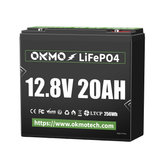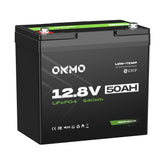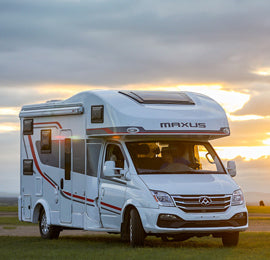Group 31 Battery Size: Standards, Origin, Authority, and Market Feedback
 When purchasing batteries for automobiles, marine vessels, RVs, or high-performance audio systems that require robust starting power, deep energy storage, or long-lasting durability, the term "Group 31" frequently appears. For users seeking high cranking amps, substantial reserve capacity, or superior endurance, the Group 31 battery is often the top choice. However, a central question lingers for many: What exactly are the dimensions of a Group 31 battery? Where does this seemingly cryptic designation originate, and why has it become an authoritatively recognized industry standard? This article provides an in-depth analysis.
When purchasing batteries for automobiles, marine vessels, RVs, or high-performance audio systems that require robust starting power, deep energy storage, or long-lasting durability, the term "Group 31" frequently appears. For users seeking high cranking amps, substantial reserve capacity, or superior endurance, the Group 31 battery is often the top choice. However, a central question lingers for many: What exactly are the dimensions of a Group 31 battery? Where does this seemingly cryptic designation originate, and why has it become an authoritatively recognized industry standard? This article provides an in-depth analysis.
 Part 1: What Are the Exact Dimensions of a Group 31 Battery?
Part 1: What Are the Exact Dimensions of a Group 31 Battery?
First, it's crucial to understand that Group 31 is a standard for battery physical size and terminal type, not a performance standard. This means any battery conforming to these physical specifications, regardless of its chemical technology—be it Lead-Acid, AGM (Absorbent Glass Mat), Gel, or Lithium—can be labeled a Group 31 battery.
According to the BCI (Battery Council International) standard established in the United States, the precise dimensions of a Group 31 battery are as follows (provided in both imperial and metric units):
-
Length: 13 inches (330.2 mm)
-
Width: 6.8 inches (172.7 mm)
-
Height: 9.4 inches (238.8 mm)
Important Notes:
-
These dimensions refer to the case itself, excluding terminals and any additional mounting brackets.
-
While products from different manufacturers might have minimal variations in height (±1-2mm), the length and width must strictly adhere to the standard to ensure fitment into standard battery trays.
-
Group 31 batteries typically feature SAE post terminals, with fixed positive and negative terminal positions. On a standard Group 31 battery, the positive terminal is on the left and the negative terminal is on the right (when facing the battery with the side containing the terminals towards you).
 Part 2: The Origin and Authority of the Group 31 Size: Who Set This Standard?
Part 2: The Origin and Authority of the Group 31 Size: Who Set This Standard?
1. Origin and Governing Body:
The Group 31 designation isn't arbitrary; it originates from an authoritative industry organization—the Battery Council International (BCI). As the leading authority for the battery manufacturing industry in North America, one of BCI's core functions is to establish and maintain a systematic battery group size standard.
In the early days of the automotive industry, vehicle and battery manufacturers used their own unique battery sizes and mounting systems, creating significant confusion for the aftermarket repair and replacement sector. To resolve this issue, BCI created a standardized "Group" numbering system. Each number corresponds to a specific physical size, terminal type, and terminal location. Group 31 is one designation within this system, specifically designed for applications requiring a larger physical space to accommodate more lead plates and electrolyte, thereby delivering higher performance.
2. Where Does Its Authority Lie?
-
Interchangeability: This is the core value of the BCI standard. If your equipment originally came with or is designed for a Group 31 battery tray, you can freely choose from numerous brands—be it Optima, Odyssey, DieHard, or others. Any battery marked "Group 31" is guaranteed to fit.
-
Universal Industry Language: This standard serves as a common language among manufacturers, distributors, repair technicians, and consumers. When you state you need a "Group 31" battery, everyone understands the exact size you're referring to, eliminating the need for tedious measurements.
-
Driving Technological Innovation: The unified physical standard provides a platform for innovation in chemical technology. Manufacturers can utilize the same Group 31 casing to incorporate AGM, Gel, or even Lithium technology, offering performance far superior to traditional flooded lead-acid batteries, without consumers worrying about installation issues.
 Part 3: Market Feedback and Applications: Why is Group 31 So Highly Regarded?
Part 3: Market Feedback and Applications: Why is Group 31 So Highly Regarded?
The market is the ultimate test for any product, and the Group 31 battery, leveraging the "high capacity" afforded by its "large physique," has earned excellent reviews across multiple sectors.
Positive Market Feedback:
-
Substantial Performance Reserve: Due to its larger physical size, the Group 31 case can hold more plates and electrolyte. This directly translates to:
-
High Cold Cranking Amps (CCA): Essential for starting large-displacement diesel engines (e.g., in trucks, tractors, marine engines), even in low-temperature conditions.
-
Large Reserve Capacity (RC): For RV, camper, and car audio enthusiasts, this means the battery can power devices like lights, refrigerators, inverters, and sound systems for much longer periods with the engine off.
-
-
Broad Technology Compatibility: Many top-tier deep-cycle AGM batteries utilize the Group 31 size. These batteries are highly praised by professionals and hobbyists for their exceptional cycle life, vibration resistance, and maintenance-free operation. Similarly, emerging Lithium batteries often adopt this size to offer "drop-in" upgrade solutions.
-
Reputation for Reliability: In demanding applications like off-roading, marine use, and off-grid power systems, Group 31 batteries are often regarded as the "cornerstone of performance and reliability." User feedback generally indicates that while their price and weight (often over 60 lbs / 27 kg) are higher, the peace of mind and superior performance they deliver are considered worth the investment.
 Criticisms and Considerations to Note:
Criticisms and Considerations to Note:
-
Size and Weight: This is the primary consideration. Before planning a replacement, you must ensure the battery compartment in your vehicle or equipment has sufficient space and that the base and hold-down clamp are robust enough.
-
Price: High-performance Group 31 AGM or Lithium batteries command a premium price, often two to three times (or more) the cost of a standard smaller battery.
-
Not a Universal Solution: For ordinary passenger cars, the originally designed battery compartment might simply be too small for a Group 31. Forcing an upgrade could require modifications, making it impractical.
The Group 31 Battery Size is more than just a set of numbers (13" x 6.8" x 9.4"); it is a symbol of industry standardization, high performance, and reliability. Its authority is rooted in the BCI's decades of industry leadership, ensuring seamless compatibility across brands and technologies. The enthusiastic market feedback confirms its exceptional value in meeting high-demand starting and deep-cycle power needs.
The next time you need to select a "powerful heart" for your vehicle, boat, or expedition equipment, if you seek top-tier starting power and endurance, choosing a product bearing the "Group 31" standard is undoubtedly a wise and reliable choice.









